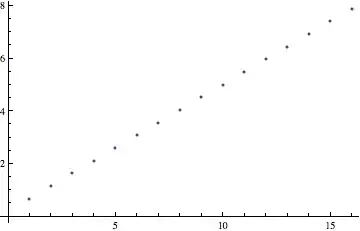I have a series of numbers called the Foo numbers, where $F_0 = 1, F_1=1, F_2 = 1 $ then the general equation looks like the following: $$ F_n = F_{n-1}(F_{n-2}) + F_{n-3} $$
So far I have got the equation to look like this: $$T_n = T_{n-1}*T_{n-2} + T_{n-3}$$
I just don't know how to solve the recurrence. I tried unfolding but I don't know if i got the right answer: $$ T_n = T_{n-i}*T_{n-(i+1)} + T_{n-(i+2)} $$
Please help, I need to describe the algorithm which I have done but the analysing of the running time is frustrating me.
